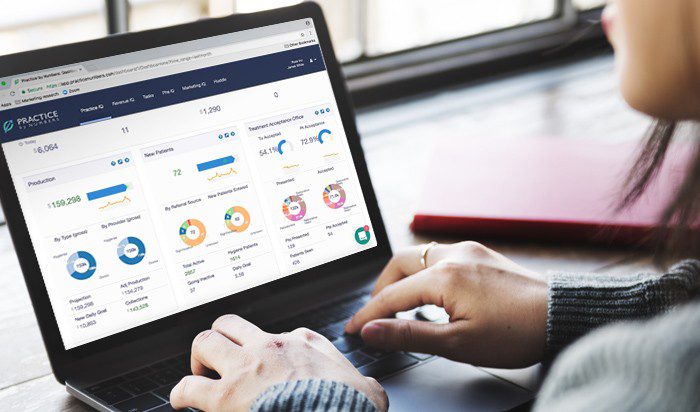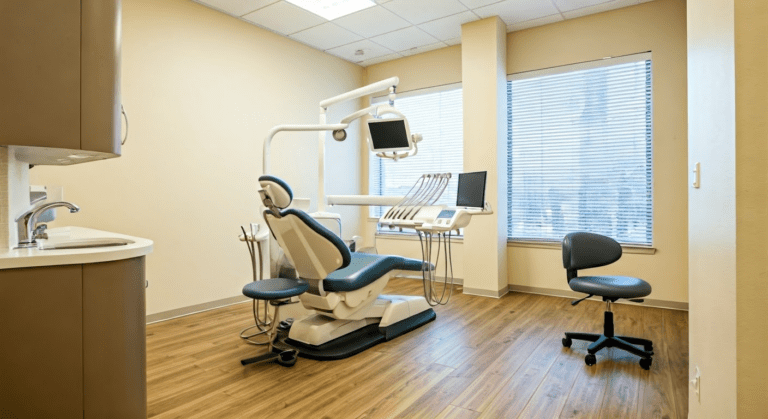Dental KPI’s: What Your Dental Marketing Data is Telling You
Most of us are very aware that large corporations, government entities, and nonprofits all use data analytics to enhance revenues, profits, and customer experiences. As a practicing dentist and business owner, I was very curious to see how I might be able to use these new technologies to improve the performance of my dental practice. Little did I know that I was about to open the door to an all new understanding of my business and its potential. The most amazing thing about this revelation was the simplicity of the tools available and the incredible impact that they could have on my business.
How Dentists Can Use Data Analytics to Benefit Their Practice
As most of us probably remember, when we started our dental careers in the 90s, dental practices organized and stored most, if not all, patient information on paper. Patient appointments were handwritten into a book that was then typed, photocopied, and shared with other team members. Paper charts were (and sometimes still are) the norm and payments were logged into a ledger or accounting software. Information was easily lost, destroyed, difficult to share, and almost impossible to cross reference in any way.
Fast forward to today, as dentists embrace the digital age, we begin to see that dental practice management software can use our data to generate reports that quickly provide insights into how we run our business. Production, collection, accounts receivable, and many other reports are now available with a few clicks of a mouse – but until recently, something was still missing – if I wanted to know my production per hour or my collections per day, I had to run a report, count the hours or days, and do the math. If I wanted to look at another time period or provider, I would need to repeat the entire process.
But now, thanks to a new dental software analytics program from Practice By Numbers, I am able to easily see all of these type of reports and more from one easy-to-use and understand dental dashboard.

The Most Advanced Data Analytics Dashboard for Dentists
It has been said, “What gets measured gets done.” And, since every dental practice is unique and has different goals, what gets measured may not be consistent from practice to practice. Every dental office should write down their dental KPIs, or key performance indicators to gauge the success of their overall dental marketing efforts.
To accurately monitor dental KPIs, you need a dental analytics software program that can help you accurately monitor and track applicable data. For example, the dashboard analytics software program from Practice by Numbers gives dentists a highly specialized data analytics software that organizes and displays dental practice data and KPIs in easy-to-understand diagrams and dashboards.
Which Dental Practice KPIs are Most Important
There are hundreds of KPIs that can be monitored and analyzed for any dental practice. Each practice should define and select the ones that align with their practice’s overall goals. Below are examples of dental KPI’s that your practice may want to track:
Hygiene KPIs: There are many things you can do to track the performance of your hygiene appointments, such as:
- Production-per-hour and day
- Percentage of scheduled hours utilized to treat patients
- Reappointment rate
- Percentage of perio out of gross hygiene production
- Percentage of patients receiving a fluoride treatment
Having hygienists aware of these KPIs and numbers on a daily basis helps improve their own performance and reveals weaknesses in some systems, which you can then correct. With a dental practice software, such as the one from Practice by Numbers, you can also easily set-up a custom dashboard for hygienists to view and utilize.
Patient KPIs: Dental dashboards can help you understand the value of patients by displaying metrics such as the number of active patients, new patients (including source), retention rate, production per active patient, and patient treatment acceptance rate.
Opportunity KPIs: With the right dental analytics software, your team can view hygiene and restorative treatment opportunities that to fill schedules. For example, in the Revenue IQ tab within the Practice by Numbers dental dashboard, your team has instant access to log contacts and create tasks to prevent patients from slipping through the cracks. Plus, within the dental software, accountability for scheduling efforts can be easily tracked by owners and managers.
Financial KPIs: Dental softwares that track dental KPIs can provide very detailed information regarding the financial health of your practice. For example, the Practice By Numbers dental dashboard integrates with QuickBooks, so dental practice overhead can be analyzed by hour, day, chair, employee, and in many other ways that best fits your practice.
Patient Demographic KPIs: Use a dental dashboard to learn more about current and potential patients. For example, with Practice By Numbers, your team can instantly view information regarding the age of your patient base, which insurances are most or least prevalent, the number of patients per specific employer, and much more. This information is critical in making many decisions such as insurance participation, office location, and marketing material content.




